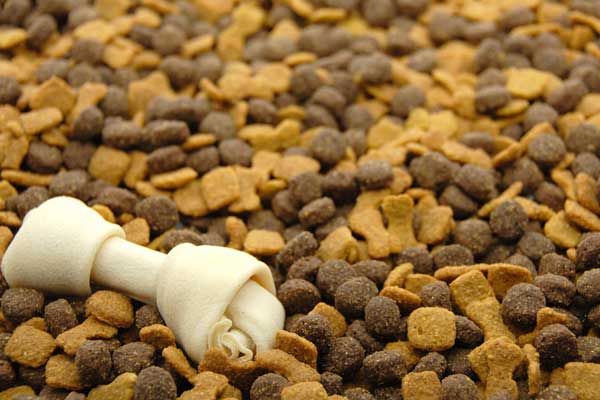
Eddie, a 72-pound golden retriever, is in great shape—and he’s 17 years old, said his owner Frank Bickley.
The reason: he’s getting the best nutrition possible, according to Mr. Bickley.
“It’s food,” Eddie’s owner, who is also the founder of One-Stop Pet Shop Westhampton, said earlier this month at his store. “It’s all food. Everybody thinks if they go to the supermarket, they’re getting acceptable food. In my opinion, they shouldn’t even be allowed to sell that stuff. And every time those companies sell a bag of food, they’re hurting somebody’s dog, and they know they’re hurting somebody’s dog. But the FDA has incredibly lax standards, if you even want to call them standards.”
Dog food can be broken down into five categories, Mr. Bickley said. The lowest rung on the ladder belongs to dry foods that use grain fillers, including corn, wheat and soy, he said, and the next group up are the ones that don’t use those three ingredients.
The third category of foods are grain-free, a relatively new item on the market, he said, but many companies don’t produce it yet.
“The cheap ones in the supermarket don’t have it because their foods are all grain,” he said. “If you took all the grain out, you’d have a bag of air and a speck of meat at the bottom.”
Above grain-free are some specialty foods, but the height of quality lies in refrigerated foods, Mr. Bickley said. There are no negatives, only positives, he said.
Take dry food, for instance. For every 20-pound bag of food, there will be about six pounds of heavily processed meat, he said.
“Think about it. How do you get six pounds of meat to sit in a warehouse for a year and then sit on my shelf for six months without rotting?” he posed. “They cook every speck of nutrition out of it, for days usually. They cook it down to five-more-seconds-in-the-oven-and-it-would-turn-to-ash. That’s the drawback. The plus is that it’s economical and they do add the nutrition back in artificially.”
Canned foods are cooked in their containers at about 369 degrees for roughly 10 hours, which also eliminates all of the nutrition, Mr. Bickley said. But since it’s sealed at that temperature, the vitamins cannot be added back in. The advantages of canned food, though, are that it tastes very good to dogs and has a moisture content of 72 to 78 percent, making it a lot easier to digest than dry food, he said.
Refrigerated foods have no drawbacks, Mr. Bickley said. It’s cooked at a low temperature for about 90 minutes, so the natural nutrition is left in, he said. Because it’s not sealed in a can, even more vitamins can be added. Its moisture content is close to 70 percent and “it tastes better than anything to the dogs,” he said, adding that it costs 15 to 20 percent more than dry and canned foods.
A six-pound roll, which will last 10 days for a 50-pound dog, costs $12.99. But be careful: without fail, dog food companies lie about appropriate portion sizes, Mr. Bickley said.
“They always blow it way out of proportion,” he said. “In some cases, they’ll tell you to use two or three times more than you need because that makes them an extra $12 million a week. But they all do it, every single one. The best foods, the worst foods, they all do it.”
He recommends scaling back the serving size about 20 percent to start. It will be different for every dog, he said, depending on age and metabolism. A 2-year-old dog needs about 10 percent more calories more than a 4-year-old dog, he noted.
But no matter how old the dog, pet owners should be making informed decisions about the food they’re buying their animals. A food can be judged by its “kcal” rating, which is metabolizable energy, Mr. Bickley explained. The higher the number, the less filler, he said. It should be a number between 250 and 600, he reported.
“If you cannot find it on a bag of food, that’s an indicator that they’re ashamed of the number and they don’t want people to know what it is,” Mr. Bickley said. “They’re not required to put it on there.”
For more information, visit dogfoodadvisor.com.